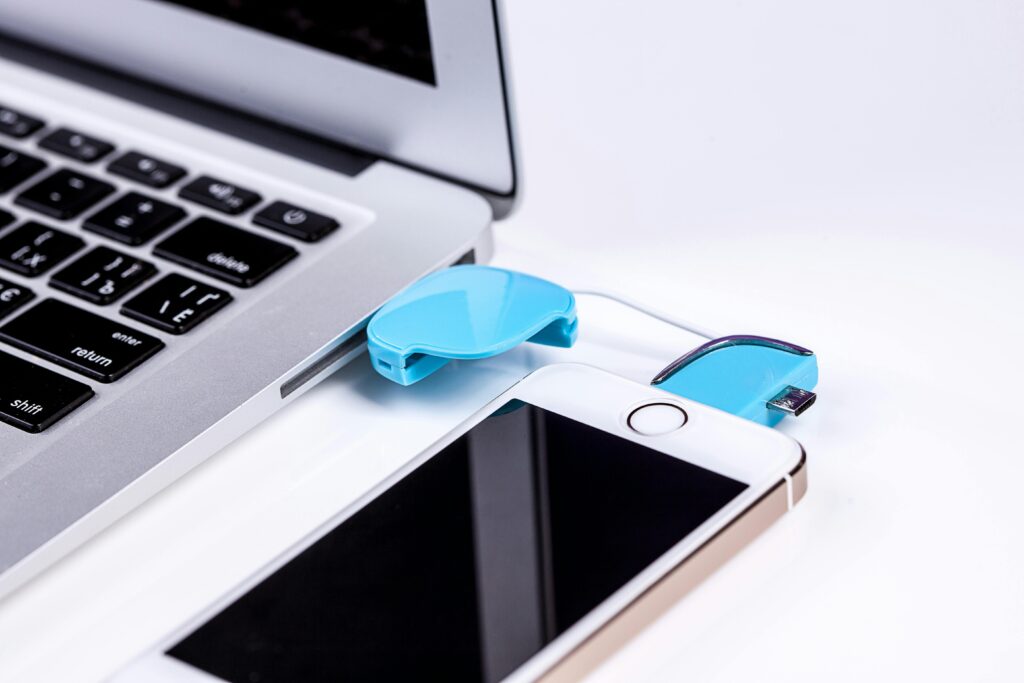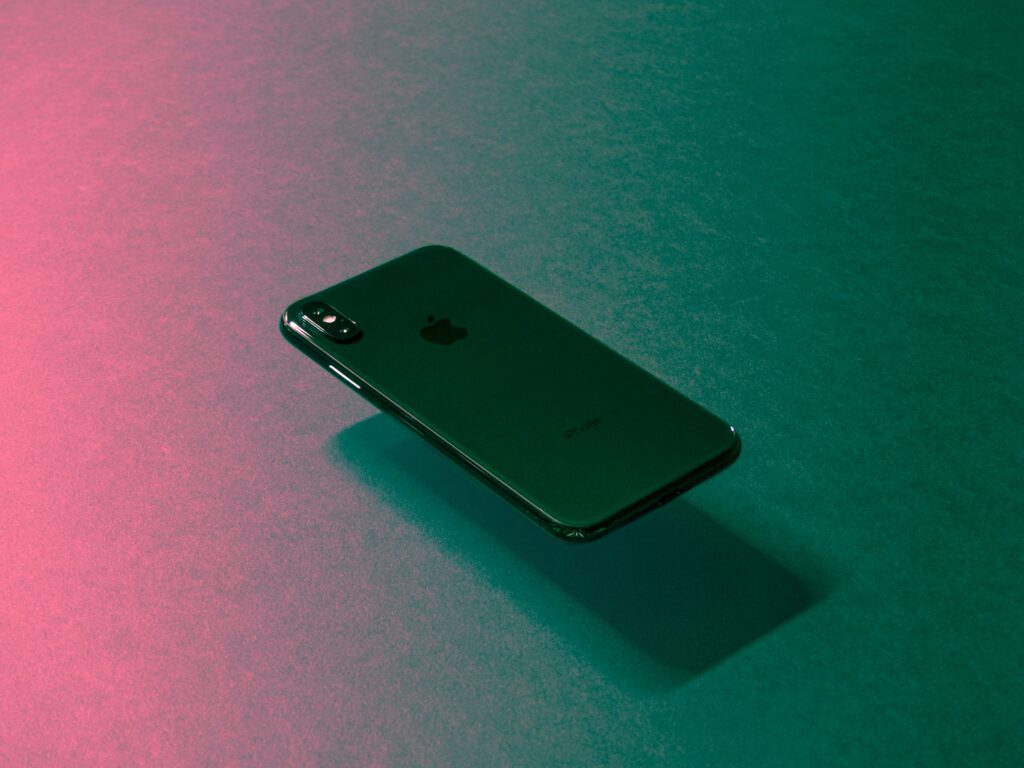If you’ve ever experienced MyFitnessPal not syncing properly with other apps or devices, you’re not alone. Syncing issues can disrupt your fitness tracking and leave you frustrated. Thankfully, most of these problems are easy to resolve once you know what’s causing them. Whether it’s a simple setting that needs adjustment or a connectivity issue, we’ll walk you through the steps to get MyFitnessPal syncing again. Let’s dive into the most common causes and solutions for this annoying issue, so you can get back to tracking your health goals smoothly.

Why MyFitnessPal Syncing Issues Happen
Syncing issues with MyFitnessPal can be frustrating, especially when you’re trying to track your calories, steps, exercise, and other health metrics in real time. These issues can stem from a variety of causes, and understanding them can help you troubleshoot effectively. Below are the most common reasons why MyFitnessPal may not sync properly:
1. Permissions and Settings
For MyFitnessPal to sync correctly with third-party apps (like Apple Health, Google Fit, or Fitbit), the appropriate permissions must be granted. If any of these permissions are turned off, the syncing process will fail. Similarly, if the apps aren’t linked correctly or if privacy settings are not set properly, MyFitnessPal might not have access to the data it needs to sync with other devices.
- Solution: Make sure that all required permissions are enabled in MyFitnessPal’s settings and any connected apps.
2. App Version Compatibility
MyFitnessPal regularly updates its app to fix bugs, improve performance, and introduce new features. If you’re using an outdated version of MyFitnessPal or an external app, it can result in syncing issues. This is especially true if there have been updates to iOS or Android that MyFitnessPal hasn’t fully integrated with yet.
- Solution: Check for updates in the App Store or Google Play Store and ensure that both MyFitnessPal and any connected third-party apps are running the latest versions.
3. Connectivity Problems
Sometimes, syncing issues arise from poor or unstable internet connections. If MyFitnessPal is trying to sync data while there’s no active internet connection (or if the connection is intermittent), it might fail to upload or receive data from connected devices.
- Solution: Ensure you have a stable internet connection when syncing. If you’re using mobile data, consider switching to Wi-Fi for more stable syncing.
4. Sync Frequency and Delays
MyFitnessPal doesn’t always sync in real-time with third-party apps. Instead, it syncs periodically, which means there can be a delay in data appearing on your dashboard. Additionally, some apps or devices (like Fitbit or Garmin) might sync at different intervals, which can cause discrepancies in the data.
- Solution: Be patient and try to force a sync manually by opening the app and going to the “Sync” option in the settings. You may also want to check the sync settings in the third-party apps to make sure they are syncing correctly.
5. Account Issues or Conflicts
If you’re using multiple devices or multiple accounts (for example, logging in with different usernames or using Apple ID), there could be conflicts that prevent MyFitnessPal from syncing data properly. This is especially common when switching between devices or when using shared devices with multiple users.
- Solution: Stick to a single MyFitnessPal account and avoid logging in and out of different accounts on the same device. Ensure that your MyFitnessPal account is linked to the correct third-party apps.
6. Software Bugs or Glitches
Like any software, MyFitnessPal can experience bugs or glitches that temporarily prevent syncing. These can occur after an update or during server maintenance. If syncing issues persist across multiple devices or accounts, there may be a bug in the app itself.
- Solution: If you suspect a bug, contact MyFitnessPal support for assistance. In some cases, uninstalling and reinstalling the app can fix the problem by resetting the connection and clearing any cached data causing the issue.
7. Data Overload
MyFitnessPal’s vast food database and syncing with multiple devices can sometimes result in data overload, especially if you have a long history of entries. This can slow down the syncing process or even prevent it from completing.
- Solution: Regularly clear out old or irrelevant data, especially in third-party apps or the MyFitnessPal app itself, to help reduce the chances of syncing issues.

Step-by-Step Guide to Fixing MyFitnessPal Syncing Issues
If you’re experiencing syncing issues with MyFitnessPal, don’t worry there are several troubleshooting steps you can take to resolve the problem. Follow this step-by-step guide to fix common syncing issues and get MyFitnessPal syncing with your devices and apps again.
Step 1: Check App Permissions and Settings
The first thing to do is ensure that MyFitnessPal has the necessary permissions to sync with other apps, such as Apple Health, Google Fit, or Fitbit. Without these permissions, syncing will not work.
How to Check Permissions:
- Open MyFitnessPal.
- Go to the Menu (three horizontal lines or the “More” tab).
- Navigate to Settings > Privacy or Apps & Devices.
- Ensure that the required permissions for syncing with third-party apps are granted. If you’re using iOS, check your HealthKit Sharing permissions.
Tip: If you’ve recently updated your operating system or MyFitnessPal, it’s a good idea to double-check these permissions, as updates sometimes reset settings.
Step 2: Force a Sync
If the app isn’t syncing automatically, you can try forcing the sync manually. This will prompt MyFitnessPal to sync with any connected devices or third-party apps.
How to Force Sync:
- Open MyFitnessPal.
- Go to the Menu (three horizontal lines or “More” tab).
- Scroll down and tap Sync at the bottom of the screen.
- Wait for MyFitnessPal to sync with your connected devices and apps. A success message will usually appear once the sync is complete.
Tip: Make sure you are connected to a stable internet connection, as syncing may not work properly on a poor connection.
Step 3: Update MyFitnessPal and Connected Apps
Outdated versions of MyFitnessPal or third-party apps can cause syncing issues. Make sure you’re running the latest version of MyFitnessPal and any connected apps like Apple Health, Google Fit, or Fitbit.
How to Update MyFitnessPal:
- Open the App Store (iOS) or Google Play Store (Android).
- Search for MyFitnessPal.
- Tap Update if a new version is available.
How to Update Third-Party Apps:
- Go to the App Store or Google Play Store.
- Search for the third-party app (e.g., Google Fit, Apple Health).
- Tap Update if an update is available.
Tip: Regularly check for updates to avoid syncing issues caused by outdated software.
Step 4: Re-link MyFitnessPal and Third-Party Apps
Sometimes, disconnecting and then reconnecting MyFitnessPal with third-party apps (e.g., Apple Health, Google Fit) can reset the connection and solve syncing issues.
How to Re-link MyFitnessPal:
- Open MyFitnessPal.
- Go to Menu > Apps & Devices.
- Find the third-party app (e.g., Apple Health, Google Fit) in the list and tap Disconnect.
- After disconnecting, tap Connect to re-link the app.
- Follow the prompts to allow necessary permissions for syncing.
Tip: You may need to repeat this process for each third-party app that’s not syncing properly.
Step 5: Clear Cache or Reinstall MyFitnessPal
If the app still isn’t syncing, there may be an issue with the cache or the app itself. Clearing the cache or reinstalling the app can help reset any issues causing the sync failures.
How to Clear Cache (Android):
- Open Settings on your phone.
- Go to Apps > MyFitnessPal.
- Tap Storage > Clear Cache.
How to Reinstall MyFitnessPal:
- Uninstall MyFitnessPal from your device.
- Go to the App Store or Google Play Store.
- Search for MyFitnessPal and reinstall the app.
- Open the app, log in, and re-link any third-party apps as needed.
Tip: Ensure that any unsynced data is backed up online before reinstalling the app to prevent data loss.
Step 6: Check for Known Issues and Support
If you’ve followed all the steps above and MyFitnessPal is still not syncing, it could be due to a known issue with the app or third-party integrations.
How to Check for Known Issues:
- Visit MyFitnessPal’s support page.
- Look for any known issues or temporary workarounds posted regarding syncing problems.
- If your issue isn’t listed, contact MyFitnessPal Support for further assistance.
Tip: Sometimes, server-side issues or app maintenance can cause temporary syncing failures. Check if there’s a widespread issue affecting users.

ReciMe – A Practical Alternative for Meal Organization and Nutrition Tracking
At ReciMe, we understand that managing meals, recipes, and grocery lists can sometimes feel overwhelming. If you’ve experienced syncing issues with other apps, we offer a simple solution. Our app makes it easy to save and organize recipes from platforms like Instagram, TikTok, Facebook, Pinterest, and YouTube, so you can focus on what truly matters – preparing and enjoying your meals.
ReciMe goes beyond just organizing recipes. It helps you track calories in the recipes you save. While it’s not a traditional calorie-tracking app, ReciMe allows you to calculate the calories in your saved meals, making it a useful tool for anyone looking to stay on top of their nutrition. Even if syncing issues with other apps are preventing your usual calorie tracker from working properly, ReciMe can serve as a helpful alternative for keeping track of your food intake.
Key Features:
- Smart Grocery Lists: Automatically sorted by supermarket aisle for a quicker, more organized shopping experience.
- Meal Planning: Plan your meals for the week, reducing waste and ensuring you always have the ingredients you need.
- Recipe Organization: Save and organize recipes from social media, photos, or screenshots using our AI-powered importing system.
- Calorie Tracking: While ReciMe isn’t a traditional calorie counter, it does allow you to track calories in your saved recipes, making it a useful supplement to your nutrition tracking.
- Cross-Platform Accessibility: Available on iOS, with a Chrome Extension for faster recipe saving. An Android version is also in the works, with early access available through a waitlist.
ReciMe is available in a free version (with up to 8 recipes saved) and a premium version for those who need unlimited recipe storage and additional features. If you’ve been dealing with syncing issues in other apps, ReciMe provides a reliable way to manage your meals, track calories, and stay on top of your health goals without the hassle of syncing errors.
Just try it – you’ll love it:



Why Syncing Issues Persist and What to Expect in the Future
Syncing issues with MyFitnessPal and other apps are a common frustration. These issues often occur for a few key reasons, and while they can be resolved in many cases, they still persist due to the complexities of app integration, device compatibility, and other factors.
1. Third-Party App Integration
MyFitnessPal syncs with various third-party apps like Apple Health, Google Fit, and Fitbit. These apps have different syncing schedules, data formats, and settings, which can lead to syncing problems when updates are made or bugs occur.
What’s being done:
- MyFitnessPal is regularly updated to improve its integration with these apps. However, syncing issues may still happen due to the differences in how each app handles data and updates.
2. Software and Device Compatibility
Outdated software, whether it’s MyFitnessPal, iOS, or Android, can cause syncing problems. Additionally, some devices may not fully support all syncing features, leading to incomplete data transfers.
What’s being done:
- App developers are continually working to ensure that MyFitnessPal is compatible with the latest devices and operating system versions, but occasional issues may still arise with older devices or software.
3. Data Overload or Corruption
Large amounts of data or corrupted data can slow down or stop syncing altogether. If your data isn’t syncing correctly, it might be due to conflicts or problems within the app’s cache.
What’s being done:
- MyFitnessPal is optimizing how data is handled to ensure faster syncing. Clearing the cache or reinstalling the app can help reset the data and resolve some issues.
4. Network and Connectivity Issues
Weak or unstable internet connections can prevent MyFitnessPal from syncing properly. Syncing relies on a stable internet connection, and interruptions can cause delays or failures in the process.
What’s being done:
- Future updates may include better handling of connectivity issues, but a stable connection will always be essential for successful syncing.
What to Expect Moving Forward
While syncing issues won’t be eliminated overnight, improvements are being made to make the process smoother:
- Better integration with third-party apps.
- Improved data handling for faster syncing, especially with large datasets.
- Automatic error detection to identify and fix syncing issues quickly.
- Fewer disruptions due to network issues, with better support for low connectivity situations.
Conclusion
Syncing issues with MyFitnessPal can be frustrating, especially when you rely on the app to track your calories, steps, and workouts. The most common reasons for these issues include integration problems with third-party apps, outdated software, data overload, and connectivity issues.
However, by following the troubleshooting steps such as ensuring proper permissions, updating your apps, force-syncing, and managing your data you can often resolve these problems on your own. While syncing issues may persist occasionally due to app or device updates, the development teams are constantly working to improve the process, so you can expect better performance in the future. In the meantime, staying proactive with updates and app settings will help keep your data accurate and up-to-date.
FAQ
1. Why is MyFitnessPal not syncing with Apple Health?
This could be due to missing permissions, outdated app versions, or connectivity issues. Ensure that MyFitnessPal and Apple Health are properly linked in the settings, and that you’re using the latest versions of both apps. Re-linking the apps or reinstalling MyFitnessPal might help resolve the issue.
2. What should I do if MyFitnessPal isn’t syncing my workouts?
Check that your MyFitnessPal app is up-to-date, and that it’s properly linked to any fitness devices or third-party apps (like Fitbit or Garmin). If syncing still doesn’t occur, try force-syncing, clearing your app cache, or reinstalling the app.
3. Why do my step counts from Google Fit or Fitbit not appear in MyFitnessPal?
Syncing issues can occur if the apps are not properly linked, or if there are connectivity or data conflicts. Re-linking the apps or checking for app updates can help resolve the problem.
4. How can I force MyFitnessPal to sync data?
To force a sync, open MyFitnessPal and navigate to the “Menu” section. Scroll down to the “Sync” option and select it to manually trigger the sync process. Ensure you have a stable internet connection while doing this.
5. What can I do if MyFitnessPal continues to not sync after troubleshooting?
If troubleshooting doesn’t resolve the issue, check for known bugs on MyFitnessPal’s support page or contact their customer support for further assistance. They may be able to identify specific issues with your account or provide additional guidance.
